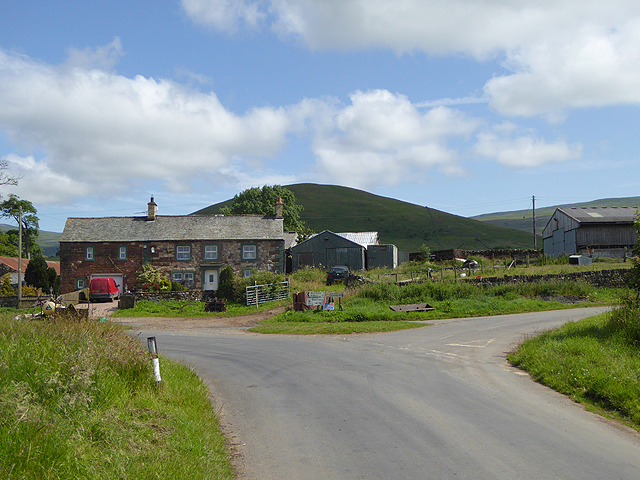Bluethwaite Hill
Hill, Mountain in Westmorland Eden
England
Bluethwaite Hill

Bluethwaite Hill, also known as Blue Thwaite Hill, is a prominent hill located in the county of Westmorland in the northwestern region of England. It is part of the larger Pennines mountain range and is situated in the Yorkshire Dales National Park.
Standing at an elevation of approximately 552 meters (1,811 feet), Bluethwaite Hill offers breathtaking panoramic views of the surrounding countryside. It is characterized by its rounded shape and green slopes, covered in heather and grasses. The hill is composed mainly of millstone grit, a durable rock that is resistant to erosion, giving it a rugged appearance.
The summit of Bluethwaite Hill is marked by a cairn, which acts as a navigational aid for hikers and serves as a focal point for those seeking to reach the top. The ascent to the summit can be challenging, with steep slopes in certain sections, making it a popular destination for experienced walkers and mountaineers.
The hill is home to a variety of wildlife, including upland birds such as curlews, lapwings, and golden plovers. The surrounding moorland provides a habitat for grouse and other small mammals.
Bluethwaite Hill is a popular destination for outdoor enthusiasts, offering opportunities for hiking, mountain biking, and birdwatching. Its remote location and unspoiled natural beauty make it an ideal spot for those seeking tranquility and a connection with nature.
Overall, Bluethwaite Hill in Westmorland is a picturesque and challenging hill, providing visitors with stunning views and a chance to explore the rugged beauty of the Yorkshire Dales National Park.
If you have any feedback on the listing, please let us know in the comments section below.
Bluethwaite Hill Images
Images are sourced within 2km of 54.635651/-2.451643 or Grid Reference NY7026. Thanks to Geograph Open Source API. All images are credited.


Bluethwaite Hill is located at Grid Ref: NY7026 (Lat: 54.635651, Lng: -2.451643)
Administrative County: Cumbria
District: Eden
Police Authority: Cumbria
What 3 Words
///guards.tapers.mystified. Near Appleby-in-Westmorland, Cumbria
Nearby Locations
Related Wikis
Nearby Amenities
Located within 500m of 54.635651,-2.451643Have you been to Bluethwaite Hill?
Leave your review of Bluethwaite Hill below (or comments, questions and feedback).





















